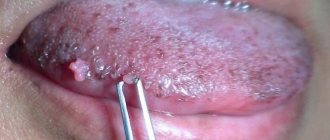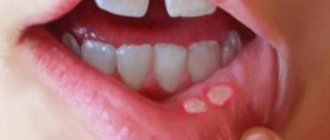A skin growth on a cylindrical pedicle, sometimes almost invisible, is called papilloma. It often appears out of nowhere and does not appear for a long time. But with any “jump” of immunity or in the heat, it suddenly appears to your eyes, first as a single person: one papilloma “mother” can “pop out” in the armpit or on the eyelid (her favorite places, for example, on the bends of the elbows and in the popliteal fossae), and then “let in” the “babies”, that is, literally “sprinkle” all sorts of places on our body. For some, this phenomenon will only be a temporary disorder - well, they say, it gets in the way, clings to clothes, and if it’s “stuck” on the face, it’s ugly, a cosmetic defect, but you don’t have to notice! But is this small growth so harmless, especially when it forms a whole colony around itself? Should I delete it, or leave it and forget it?
Why do papillomas occur in children?
Once inside the body, the virus peacefully coexists with other microorganisms and does not manifest itself in any way until a certain point - when the child’s immunity weakens, benign growths may appear. The reasons for the appearance of papillomas in children are due to a decrease in natural protection in the case of:
- previous bacterial, viral and fungal infections;
- frequent colds;
- allergies;
- autoimmune pathologies;
- gastrointestinal diseases;
- immunodeficiency;
- long-term drug therapy;
- injuries, surgeries and burns;
- vitamin deficiency
Any attack on children's immunity can provoke virus activity. Sometimes the starting point is mental and physical overexertion, stress, and nervous shock.
HPV is highly contagious and can be transmitted even through short-term contact with a carrier. In children, 3 routes of infection with the human papillomavirus are most relevant.
- Perinatal. Passing through the vaginal canal during childbirth, the baby comes into contact with the physiological secretions of the mother, receiving a viral load. Another option for this method of infection is the transmission of HPV from the expectant mother to the fetus through the placental bloodstream during pregnancy.
- Domestic. This method is the most common reason for the appearance of papillomas on a child’s body. The virus is transmitted through surfaces and objects touched by an infected person. Common sources are towels, combs, general hygiene products, and clothing, from which HPV enters the child’s body through abrasions and small wounds.
- Contact. Transmission of the virus occurs when a healthy person comes into contact with the skin, hair or other parts of the carrier’s body. The simplest example of such an infection is playing and interacting with children who have rashes.
The incubation period lasts from 2–4 weeks to 3–6 months, less often up to 2–4 years. The optimal conditions for the development of HPV are a humid and warm environment. In the fresh air without contact with human skin, the virus quickly dies.
Pregnancy with papilloma virus
Infection from mother to fetus during childbirth occurs in almost 98% of cases. For a baby who passes through the birth canal, literally strewn with condylomas, the virus enters the mouth and eyes, so all women planning a pregnancy should be tested in advance and, if necessary, treated for HPV and all types of STDs. Only after completion of treatment can you plan to conceive.
If the disease was in a latent form and was first discovered during pregnancy, and this happens often (immunity weakens during pregnancy), then it is necessary to urgently consult a doctor: treatment of papilloma during pregnancy is possible.
HPV symptoms
The papilloma virus infects the skin and mucous membranes, causing the proliferation of the epidermis and the appearance of pathological neoplasms:
- papillomas;
- warts;
- condylomas.
They look like small skin growths ranging in size from 1 to 5–8 mm, sometimes there are growths reaching 1–2 cm. Basically, such formations imitate healthy skin in color, but there are elements of dark brown and white shades.
The main places of distribution of papillomas:
- face and neck;
- external genitalia and groin area;
- the inner surface of the elbow and knee bends;
- soles of feet;
- fingers and skin around nails.
On the mucous membranes, elements can appear in the larynx, nasal passages; in girls, sometimes there are formations localized on the cervix.
Types of formations
There are several types of papillomas.
- Vulgar (common) warts. They are the most common type of neoplasm. They have a “leg”, rise noticeably above the surface of healthy skin, reaching a diameter of up to 1–2 cm. Sometimes hair grows from the central part of the wart. Such formations do not bother the child with pain or itching and appear on the arms, back or legs.
- Flat or juvenile papillomas. They look like small pigmented plaques of a fuzzy round shape, do not extend beyond the skin and form in groups. Such elements are characterized by a smooth surface and selectivity: they appear on the face, neck, legs, sometimes hands, but never in the armpits, genitals or skin folds. Occurs in children older than 5–6 years.
- Condylomas or genital papillomas. These elements resemble small papillae. They are pink in color and form in areas with thin skin: in the genital area, on the mucous membranes.
- Plantar warts. They affect the feet, occur under the big toes and visually resemble small round calluses.
Another variant of formations is filamentous warts or acrochords. They are similar to regular ones, but differ in elasticity and more compact sizes up to 5–6 mm. They prefer to appear under the mammary glands, in the groin, armpits, and are found on the neck and face.
The dangers of human papillomavirus
Some of the representatives of these microorganisms are harmless to humans, while others can provoke the growth of cancer cells. HPV is classified into two main types:
- Strains with high oncogenic risk. Such variants of the virus provoke the development of condylomas on the mucous membranes and in the genital area. Under unfavorable circumstances, they can cause an oncogenic mutation.
- Strains with low oncogenic risk. Viruses of this type cause warts, plantar lesions and juvenile papillomas. The risk of cell degeneration is minimal.
The greatest danger lies in girls: studies conducted in the USA have proven that 98% of cases of cervical cancer are associated with this virus. There is also a risk of developing cancer of the vagina, ovaries, anal canal, larynx, pharynx, and in boys, the genitals. Papillomas located in the anus and genital area require special attention.
Is human papillomavirus (HPV) a sexually transmitted disease?
HPV - in more detail stands for “a virus that causes a benign tumor of epithelial origin in the form of a papilla” - papilloma (papilloma: Latin papilla - nipple and Greek -oma - tumor). It is classified as a sexually transmitted disease (STD). The concept today has, unfortunately, become much broader, and if earlier we heard about several “terrible”, as it seemed to us, classical diseases of Venus, which are actually treated simply and are detected quickly (syphilis, gonorrhea, trichomoniasis, chancroid), then The list of “new” STDs - insidious, difficult to diagnose, and sometimes difficult to treat and completely incurable (HIV) - is constantly growing.
So, we include the following “new” STDs: chlamydia, mycoplasmosis, ureaplasmosis, gardnerellosis, genital herpes, candidiasis, and human papillomavirus. If growths from papillomavirus have formed in the areas of the genital or perianal organs, then they are called “pointed candylomas,” but in fact they are the same virus, only its different strains (types).
Diagnosis of HPV
The main clinical sign of papillomatous infection is formation on the skin. Therefore, in most cases, an examination by a doctor is sufficient to make a correct diagnosis. Additional examination methods are:
- biopsy or scraping - taking biological material for further research;
- PCR (polymerase chain reaction);
- General and biochemical blood test.
These laboratory diagnostic methods help:
- detect the presence of papilloma virus in the child’s body (if there are no growths on the skin);
- accurately determine the HPV strain;
- understand the form of the infection (acute or chronic).
These data are necessary for assessing oncogenic risk and timely further examination.
Treatment results
The photo below shows the results of removal of neck papillomas using radio wave surgery
Rarely occur again. Reappearance of papillomas is possible with high virus activity in the body. In this situation, additional treatment with immunomodulators or consultation with an immunologist may be required.
Treatment of HPV in children
Unfortunately, there are no effective medications for the treatment of papillomavirus in children, as well as in adults.
In most cases, the body copes on its own, and action is only necessary in situations where there is a risk of oncological processes or tumors interfere with the child’s daily life. What do they do if children develop papillomas?
- Do not panic. In the vast majority of cases, warts and other growths go away on their own within 2–3 years. The human papillomavirus is not only easily transmitted, but also quickly “leaves” the child’s body without any consequences or external help.
- Do not try to remove the growths at home, do not tear off or cut off under any circumstances. This is fraught with infection and the extensive appearance of new rashes.
- Contact a dermatologist if any suspicious elements appear on your child’s skin. During the consultation, the doctor will examine and give recommendations, and, if necessary, prescribe removal.
Medical care for manifestations of HPV is limited to the removal of formations that affect the quality of life or are located in places where they are often injured and cause discomfort (on the eyelid, in the genital area, in the larynx).
An extraordinary inspection is needed if:
- the color of the papilloma changes;
- the wart begins to grow or change shape;
- blood or other fluid is released from the formation;
- papilloma is subject to constant friction due to clothing;
- the rashes are on the face or mucous membranes.
It is advisable not to delay a visit to a dermatologist if the formation itches, hurts, causes other physical discomfort, or has been injured. In other cases, it is recommended to observe the “behavior” of the papilloma virus and control the elements on the child’s body.
Options for removing papillomas
There are 5 modern and proven methods, each of which has its own limitations, features and advantages.
- Electrocoagulation. The method is based on the influence of high-frequency electric current. It literally “burns out” the neoplasm, leaving in its place only a dry crust, which eventually falls off on its own.
- Radio wave surgery. This method allows you to remove warts and other elements without contact with the skin, which eliminates the risk of thermal damage to tissue.
- Laser therapy. It involves treating the affected area with light waves of a certain length.
- Cryodestruction. It involves “freezing” new growths with liquid nitrogen.
- Surgical excision. It is performed under local anesthesia using a scalpel.
It is strictly not recommended in childhood to resort to traditional methods of removing warts and to use medications from the pharmacy on your own without the supervision of a doctor. After removal of papillomas, children should not:
- tear off the crust;
- sunbathe;
- visit the baths;
- cover the treatment area with a plaster;
- scratch and rub the removal site.
You should not use creams and ointments without a dermatologist's prescription. In the first 1–4 days, it is advisable to refrain from walking in direct sunlight, swimming in public bodies of water and activities that can injure the treated area of skin.
Are papilloma and condyloma the same thing?
Genital condylomas in the perineal area are sometimes single, and sometimes look like growths that resemble cauliflower in appearance. Sometimes these formations cause itching, irritation when touched, and sometimes they bleed. SM-Clinic doctors are often approached by patients who, having seen enough advertising, have been treated for years with “one pill” for supposed “exacerbations” of candidiasis (thrush). Upon examination, it turns out that the smear in such patients is normal, and the often recurring itching is actually caused by condylomas.
HPV prevention
The most effective method of preventing infections and complications caused by the human papillomavirus is vaccination. It is carried out before the onset of full puberty and before the start of sexual relations. The optimal age is from 9 to 11 years.
Other preventive measures are:
- maintaining a healthy lifestyle;
- balanced healthy diet;
- timely treatment of abrasions, scratches and other skin damage;
- informing children and adolescents about the dangers of smoking, since tobacco use increases the risk of oncogenic mutations of the virus;
- regular preventive examinations.
It is very important to monitor the child’s health and support immunity in accessible ways. Active physical activity, hardening, and outdoor games are encouraged, allowing the formation of an adequate immune response to environmental factors. It is advisable to abandon home self-medication and uncontrolled use of medications, since incorrect actions can reduce the natural defenses of the child’s body and lead to the activation of HPV.







